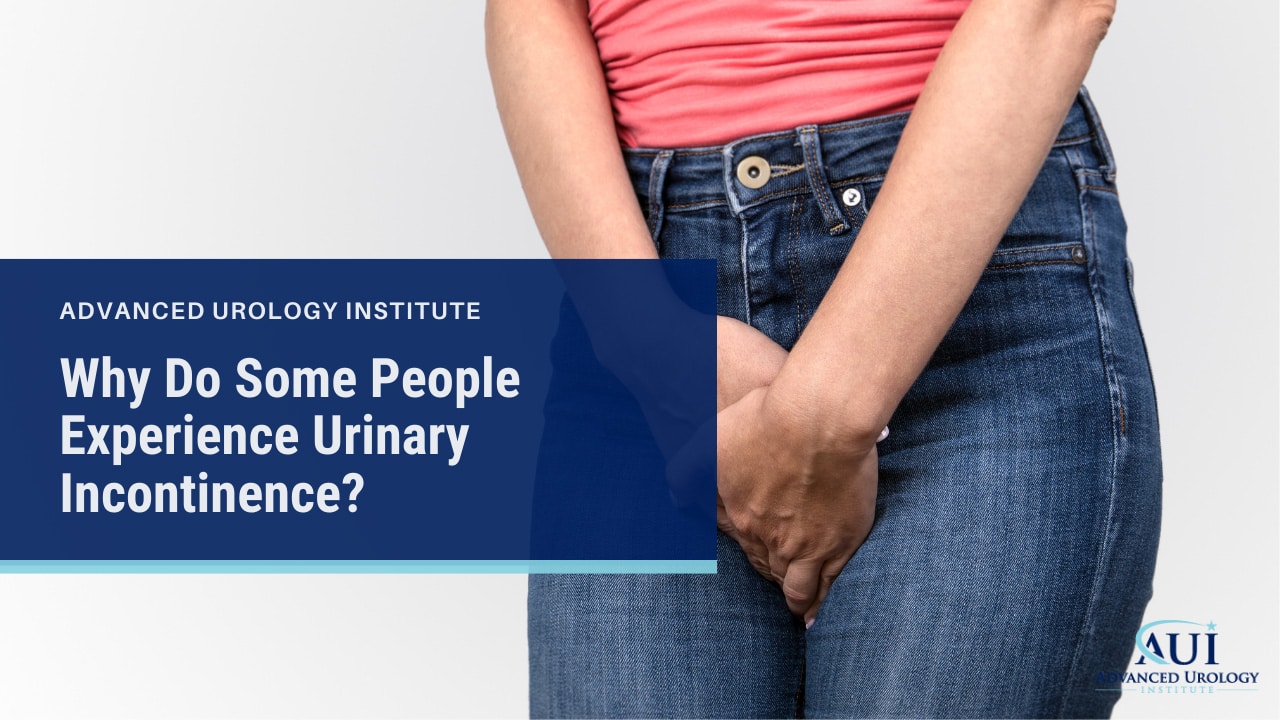Why Do Some People Experience Urinary Incontinence?
3 Key Takeaways:
- Urinary incontinence involves several variants, including stress incontinence, urge incontinence, and overflow incontinence.
- Risk factors for urinary incontinence include age, gender, pregnancy, childbirth, menopause, chronic health conditions, obesity, and certain medications.
- Diagnosis and treatment options for urinary incontinence range from lifestyle modifications and pelvic floor exercises to medications, surgical interventions, and behavioral therapies.
 Imagine yourself in the middle of an engaging conversation. Suddenly, you feel it: an involuntary leakage that you can’t control. This, my friend, is urinary incontinence: a pervasive yet often under-discussed issue. With millions of Americans suffering from this condition, it’s critical to understand what causes urinary incontinence and the significance of seeking medical help.
Imagine yourself in the middle of an engaging conversation. Suddenly, you feel it: an involuntary leakage that you can’t control. This, my friend, is urinary incontinence: a pervasive yet often under-discussed issue. With millions of Americans suffering from this condition, it’s critical to understand what causes urinary incontinence and the significance of seeking medical help.
Types of Urinary Incontinence
Urinary incontinence isn’t simply one easily defined symptom. Instead, it’s a complex issue with several variants.
A. Stress incontinence
Characterized by urine leakages during activities that exert pressure on the bladder like laughing, sneezing, or lifting, stress incontinence often occurs due to weakened pelvic muscles. The risk factors include childbirth, age, and obesity. Fortunately, pelvic floor exercises and surgical treatments can provide relief.
B. Urge incontinence
When you constantly feel a sudden, intense urge to urinate, you could be dealing with urge incontinence. It typically results from overactive bladder muscles, commonly associated with conditions like diabetes, Parkinson’s disease, or stroke. Treatment options range from medications to bladder training techniques and nerve stimulation.
C. Overflow incontinence
Overflow incontinence, marked by frequent dribbling of urine due to inability to empty the bladder completely, often stems from conditions like diabetes, spinal cord injuries, or certain medications. Effective treatment can include medications, catheterization, or even surgery.
Risk Factors for Urinary Incontinence
Your chances of developing urinary incontinence can be influenced by several factors, like age, gender, pregnancy, childbirth, menopause, chronic health conditions, obesity, and certain medications. Understanding these factors is key to developing effective prevention and management strategies.
Underlying Causes of Urinary Incontinence
A multitude of underlying conditions can lead to urinary incontinence. Weak pelvic floor muscles, neurological conditions, hormonal imbalances, structural abnormalities, and urinary tract infections are just a few.
Common Myths and Misconceptions about Urinary Incontinence
Despite popular belief, urinary incontinence is not simply a natural part of aging, nor is it exclusive to women. And perhaps most importantly, it is not unmanageable; it is indeed treatable.
Diagnosis and Treatment Options
Diagnosis starts with a thorough medical history and physical examination. This can be followed by a series of diagnostic tests and procedures. Treatments can range from lifestyle modifications and pelvic floor exercises (Kegels) to medications, surgical interventions, and behavioral therapies.
Prevention and Management Strategies
Maintaining a healthy weight, staying active, avoiding bladder irritants, managing chronic health conditions, and seeking professional help for early intervention can all play a part in managing urinary incontinence.
Urinary incontinence, in all its forms, affects a significant portion of the population. Knowledge and awareness are key in early detection and treatment. If you or someone you know struggles with bladder control, don’t hesitate to seek help.
At the Advanced Urology Institute—the largest practice of urologists in FL—patients are provided with a comprehensive approach to urinary incontinence. Expert urologists are ready to assist in managing symptoms, putting you back in control of your life. Remember, urinary incontinence is not a condition to be suffered in silence—it’s time to take control.
References:
- “Incontinence: Leakage, Causes, Diagnosis, Treatment & Prevention.” 23 Oct. 2020, https://my.clevelandclinic.org/health/diseases/17596-urinary-incontinence.
- “Bladder Training | Patient Education – UCSF Health.” https://www.ucsfhealth.org/education/bladder-training.
- “Overflow Incontinence: Symptoms, Causes, and Treatments – WebMD.” 8 Nov. 2022, https://www.webmd.com/urinary-incontinence-oab/overflow-incontinence.

